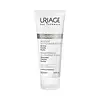What's inside
What's inside
 Key Ingredients
Key Ingredients

 Benefits
Benefits

 Concerns
Concerns

 Ingredients Side-by-side
Ingredients Side-by-side

Water
Skin ConditioningSodium Cocoyl Glycinate
CleansingSodium Laureth Sulfate
CleansingGlycerin
HumectantCocamidopropyl Betaine
CleansingSodium Methyl Cocoyl Taurate
CleansingAcrylates Copolymer
Citric Acid
BufferingParfum
MaskingPhenoxyethanol
PreservativeSodium Chloride
MaskingSodium Benzoate
MaskingCoconut Acid
CleansingMaltodextrin
AbsorbentAscorbyl Glucoside
AntioxidantCreatine
Skin ConditioningNiacinamide
SmoothingSucrose Dilaurate
EmollientSodium Cocoyl Glutamate
CleansingSodium Citrate
BufferingSodium Hydroxide
BufferingPisum Sativum Extract
Skin ConditioningWater, Sodium Cocoyl Glycinate, Sodium Laureth Sulfate, Glycerin, Cocamidopropyl Betaine, Sodium Methyl Cocoyl Taurate, Acrylates Copolymer, Citric Acid, Parfum, Phenoxyethanol, Sodium Chloride, Sodium Benzoate, Coconut Acid, Maltodextrin, Ascorbyl Glucoside, Creatine, Niacinamide, Sucrose Dilaurate, Sodium Cocoyl Glutamate, Sodium Citrate, Sodium Hydroxide, Pisum Sativum Extract
Water
Skin ConditioningCitric Acid
BufferingButyrospermum Parkii Oil
EmollientMagnesium Laureth Sulfate
CleansingSodium Hydroxide
BufferingCellulose Acetate
Sodium Cocoamphoacetate
CleansingMethylpropanediol
SolventAcrylates/C10-30 Alkyl Acrylate Crosspolymer
Emulsion StabilisingCoco-Glucoside
CleansingGlyceryl Oleate
EmollientSodium Cocoyl Glutamate
CleansingXanthan Gum
EmulsifyingSodium Citrate
BufferingBenzoic Acid
MaskingPropanediol
SolventAcrylates/Vinyl Isodecanoate Crosspolymer
Emulsion StabilisingMannitol
HumectantXylitol
HumectantRhamnose
HumectantTocopherol
AntioxidantHelianthus Annuus Seed Oil
EmollientLysine
Skin ConditioningAzelaic Acid
BufferingAndrographis Paniculata Leaf Extract
AstringentFructooligosaccharides
HumectantCaprylic/Capric Triglyceride
MaskingHydrogenated Palm Glycerides Citrate
EmollientLaminaria Ochroleuca Extract
Skin ConditioningParfum
MaskingWater, Citric Acid, Butyrospermum Parkii Oil, Magnesium Laureth Sulfate, Sodium Hydroxide, Cellulose Acetate, Sodium Cocoamphoacetate, Methylpropanediol, Acrylates/C10-30 Alkyl Acrylate Crosspolymer, Coco-Glucoside, Glyceryl Oleate, Sodium Cocoyl Glutamate, Xanthan Gum, Sodium Citrate, Benzoic Acid, Propanediol, Acrylates/Vinyl Isodecanoate Crosspolymer, Mannitol, Xylitol, Rhamnose, Tocopherol, Helianthus Annuus Seed Oil, Lysine, Azelaic Acid, Andrographis Paniculata Leaf Extract, Fructooligosaccharides, Caprylic/Capric Triglyceride, Hydrogenated Palm Glycerides Citrate, Laminaria Ochroleuca Extract, Parfum
Ingredients Explained
These ingredients are found in both products.
Ingredients higher up in an ingredient list are typically present in a larger amount.
Citric Acid is an alpha hydroxy acid (AHA) naturally found in citrus fruits like oranges, lemons, and limes.
Like other AHAs, citric acid can exfoliate skin by breaking down the bonds that hold dead skin cells together. This helps reveal smoother and brighter skin underneath.
However, this exfoliating effect only happens at high concentrations (20%) which can be hard to find in cosmetic products.
Due to this, citric acid is usually included in small amounts as a pH adjuster. This helps keep products slightly more acidic and compatible with skin's natural pH.
In skincare formulas, citric acid can:
While it can provide some skin benefits, research shows lactic acid and glycolic acid are generally more effective and less irritating exfoliants.
Most citric acid used in skincare today is made by fermenting sugars (usually from molasses). This synthetic version is identical to the natural citrus form but easier to stabilize and use in formulations.
Read more about some other popular AHA's here:
Learn more about Citric AcidParfum is a catch-all term for an ingredient or more that is used to give a scent to products.
Also called "fragrance", this ingredient can be a blend of hundreds of chemicals or plant oils. This means every product with "fragrance" or "parfum" in the ingredients list is a different mixture.
For instance, Habanolide is a proprietary trade name for a specific aroma chemical. When used as a fragrance ingredient in cosmetics, most aroma chemicals fall under the broad labeling category of “FRAGRANCE” or “PARFUM” according to EU and US regulations.
The term 'parfum' or 'fragrance' is not regulated in many countries. In many cases, it is up to the brand to define this term.
For instance, many brands choose to label themselves as "fragrance-free" because they are not using synthetic fragrances. However, their products may still contain ingredients such as essential oils that are considered a fragrance by INCI standards.
One example is Calendula flower extract. Calendula is an essential oil that still imparts a scent or 'fragrance'.
Depending on the blend, the ingredients in the mixture can cause allergies and sensitivities on the skin. Some ingredients that are known EU allergens include linalool and citronellol.
Parfum can also be used to mask or cover an unpleasant scent.
The bottom line is: not all fragrances/parfum/ingredients are created equally. If you are worried about fragrances, we recommend taking a closer look at an ingredient. And of course, we always recommend speaking with a professional.
Learn more about ParfumSodium Citrate is the sodium salts of citric acid. In skincare, it is used to alter pH levels and acts as a preservative.
Its main functions are to maintain the pH of a product and neutralize metal ions.
The acidity of our skin is maintained by our glands and skin biome; normal pH level of skin is slightly acidic (~4.75-5.5).
Being slightly acidic allows our skin to create an "acid mantle". This acid mantle is a thin barrier that protects our skin from bacteria and contaminants.
Learn more about Sodium CitrateSodium Cocoyl Glutamate is a gentle cleanser and surfactant. It is the sodium salt of the Cocoyl Glutamic Acid and comes from coconut oil. As a surfactant, it helps lift dirt and oil to be washed away.
Sodium Cocoyl Glutamate also has an emolliating effect and can help leave the skin feeling soft.
Sodium Hydroxide is also known as lye or caustic soda. It is used to adjust the pH of products; many ingredients require a specific pH to be effective.
In small amounts, sodium hydroxide is considered safe to use. However, large amounts may cause chemical burns due to its high alkaline.
Your skin has a natural pH and acid mantle. This acid mantle helps prevent harmful bacteria from breaking through. The acid mantle also helps keep your skin hydrated.
"Alkaline" refers to a high pH level. A low pH level would be considered acidic.
Learn more about Sodium HydroxideWater. It's the most common cosmetic ingredient of all. You'll usually see it at the top of ingredient lists, meaning that it makes up the largest part of the product.
So why is it so popular? Water most often acts as a solvent - this means that it helps dissolve other ingredients into the formulation.
You'll also recognize water as that liquid we all need to stay alive. If you see this, drink a glass of water. Stay hydrated!
Learn more about Water